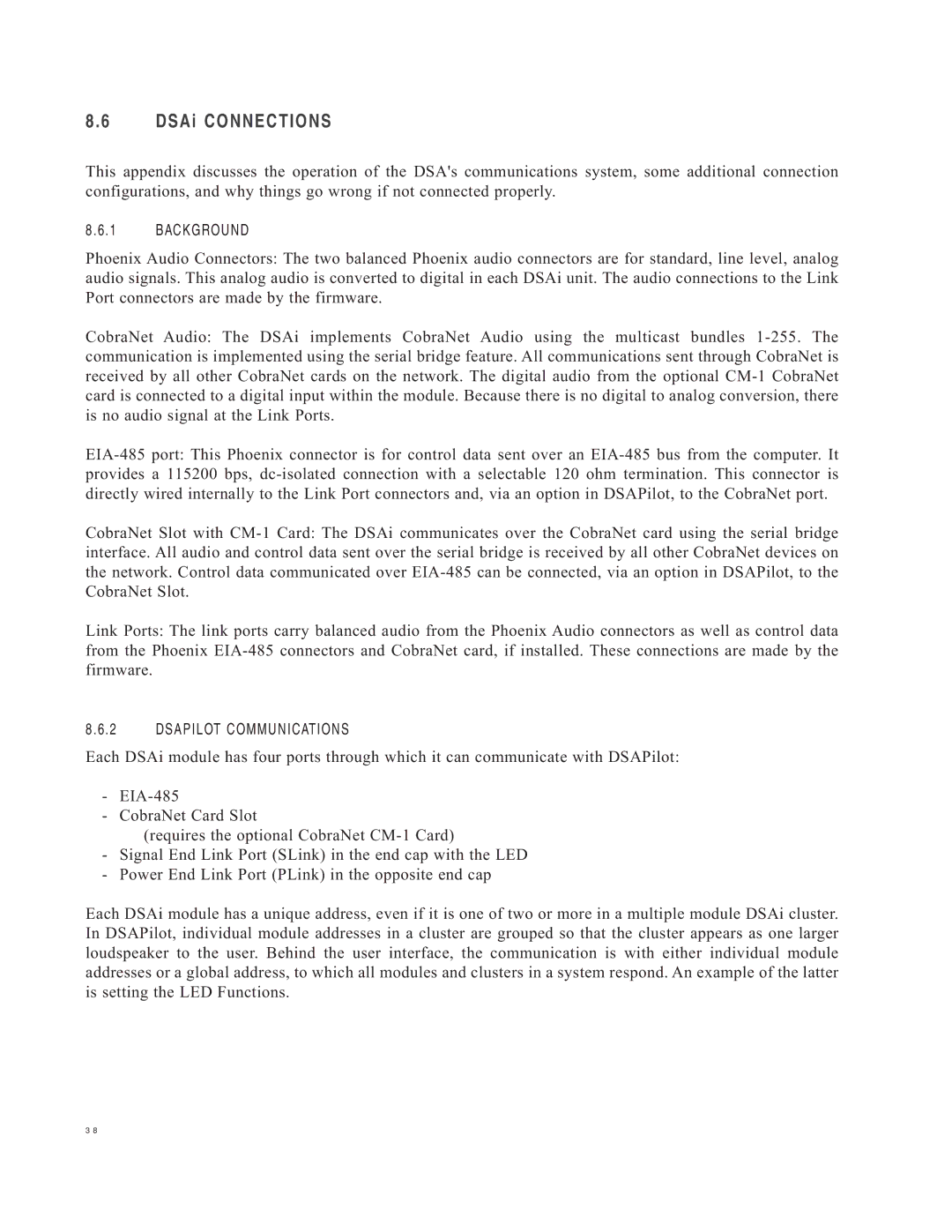8.6 DSAi CONNECTIONS
This appendix discusses the operation of the DSA's communications system, some additional connection configurations, and why things go wrong if not connected properly.
8.6.1 BACKGROUND
Phoenix Audio Connectors: The two balanced Phoenix audio connectors are for standard, line level, analog audio signals. This analog audio is converted to digital in each DSAi unit. The audio connections to the Link Port connectors are made by the firmware.
CobraNet Audio: The DSAi implements CobraNet Audio using the multicast bundles
CobraNet Slot with
Link Ports: The link ports carry balanced audio from the Phoenix Audio connectors as well as control data from the Phoenix
8.6.2 DSAPILOT COMMUNICATIONS
Each DSAi module has four ports through which it can communicate with DSAPilot:
-
-CobraNet Card Slot
(requires the optional CobraNet
-Signal End Link Port (SLink) in the end cap with the LED
-Power End Link Port (PLink) in the opposite end cap
Each DSAi module has a unique address, even if it is one of two or more in a multiple module DSAi cluster. In DSAPilot, individual module addresses in a cluster are grouped so that the cluster appears as one larger loudspeaker to the user. Behind the user interface, the communication is with either individual module addresses or a global address, to which all modules and clusters in a system respond. An example of the latter is setting the LED Functions.
38
